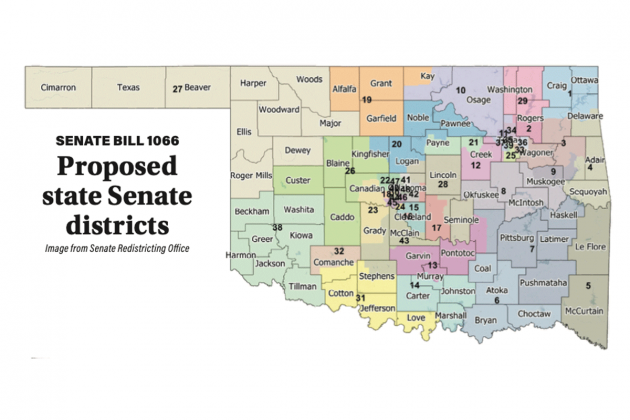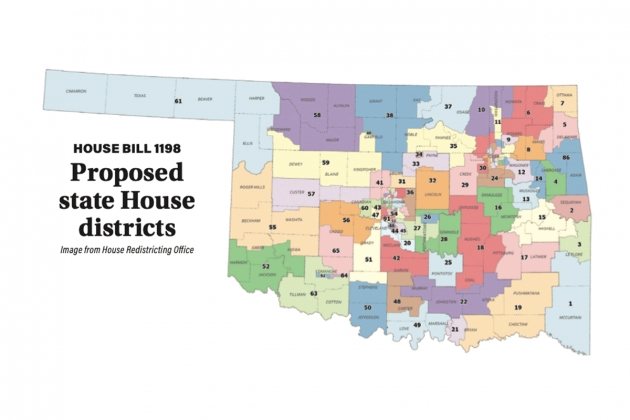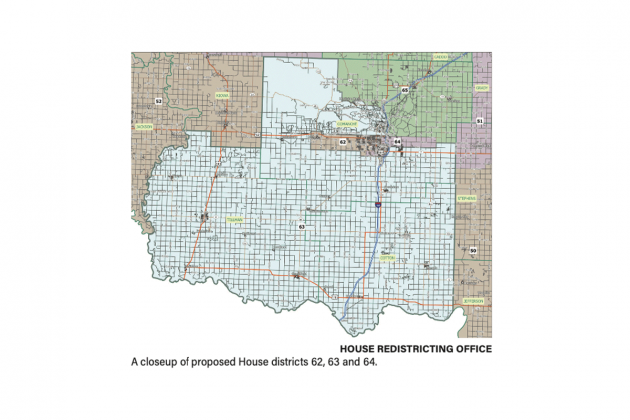OKLAHOMA CITY – Oklahoma’s 101 House and 48 Senate districts are “fairly represented” following a lengthy redistricting process which is required by the state constitution, area lawmakers said.
State Sen. John Michael Montgomery (R-Lawton) said House and Senate members held public meetings since December in municipalities across the state to gain public input about redrawing boundaries that are fair and equitable. Montgomery is a member of the Senate Select Committee on Redistricting.
“The public meetings helped shape how we did it,” he said.
The redistricting measures – House Bill 1198 and Senate Bill 1066 – were approved by the Legislature and signed into law by Gov.
Kevin Stitt on May 13. The Oklahoma City metro gained one House seat and one state Senate seat due to population growth.
However, the maps approved by lawmakers last month may not be the final maps that take effect next year. The final 2020 Census figures were not provided to legislators when the boundary lines were drawn.
Montgomery said legislators used the 2019 Census estimates for their redistricting work.
As a result, legislators will meet in a special session this fall to finalize the House and Senate districts once the Census figures are received, Montgomery said. The U.S. Census Bureau is expected to send the redistricting data to Oklahoma by Aug. 16.
State lawmakers are also mandated by the constitution to redraw congressional districts every 10 years after the decennial census is finished.
State Rep. Trey Caldwell (R-Lawton), who is a member of the House State and Federal Redistricting Committee, said lawmakers “did a good job” with the “difficult” redistricting process.
“Taking community feedback was one of the big issues this year,” said Caldwell. “We received input from the public who turned in their own maps and we took that into consideration. The thought was that a rural district needs to be rural, and an urban district needs to be urban.”
Approximately 25% of Caldwell’s District 63 will be new constituents in 2022. Voters will cast ballots in the redrawn districts beginning with next year’s elections.
Efforts were made this year to assure that school districts and cities, when possible, remained in one House or Senate district. For example, Elgin’s school district was represented by three House members after the 2010 redistricting. After this year’s redistricting, all of the Elgin school district will remain in Rep. Toni Hasenbeck’s District 65, Caldwell said. Elk City officials also requested their entire city remain whole in one district. Legislators complied.
“We went to all these people in different communities and listened to what they had to say,” Caldwell said. “I would put up our redistricting process against any state in the nation. We went to 18 public meetings for the House redistricting, had two Zoom meetings and had close to 2,000 public comments.”
Lawmakers sought to have approximately 39,000 people in each House district and about 83,000 people in each Senate district within a 2.5% margin. The redistricting formula is simple: Take the state’s total population and divide by 101 House districts and 48 Senate seats, which determines the number of people who should be in each House and Senate district.
State House and Senate members will hold a public meeting about federal redistricting at 6 p.m. Thursday, July 29, at Lawton City Hall.




